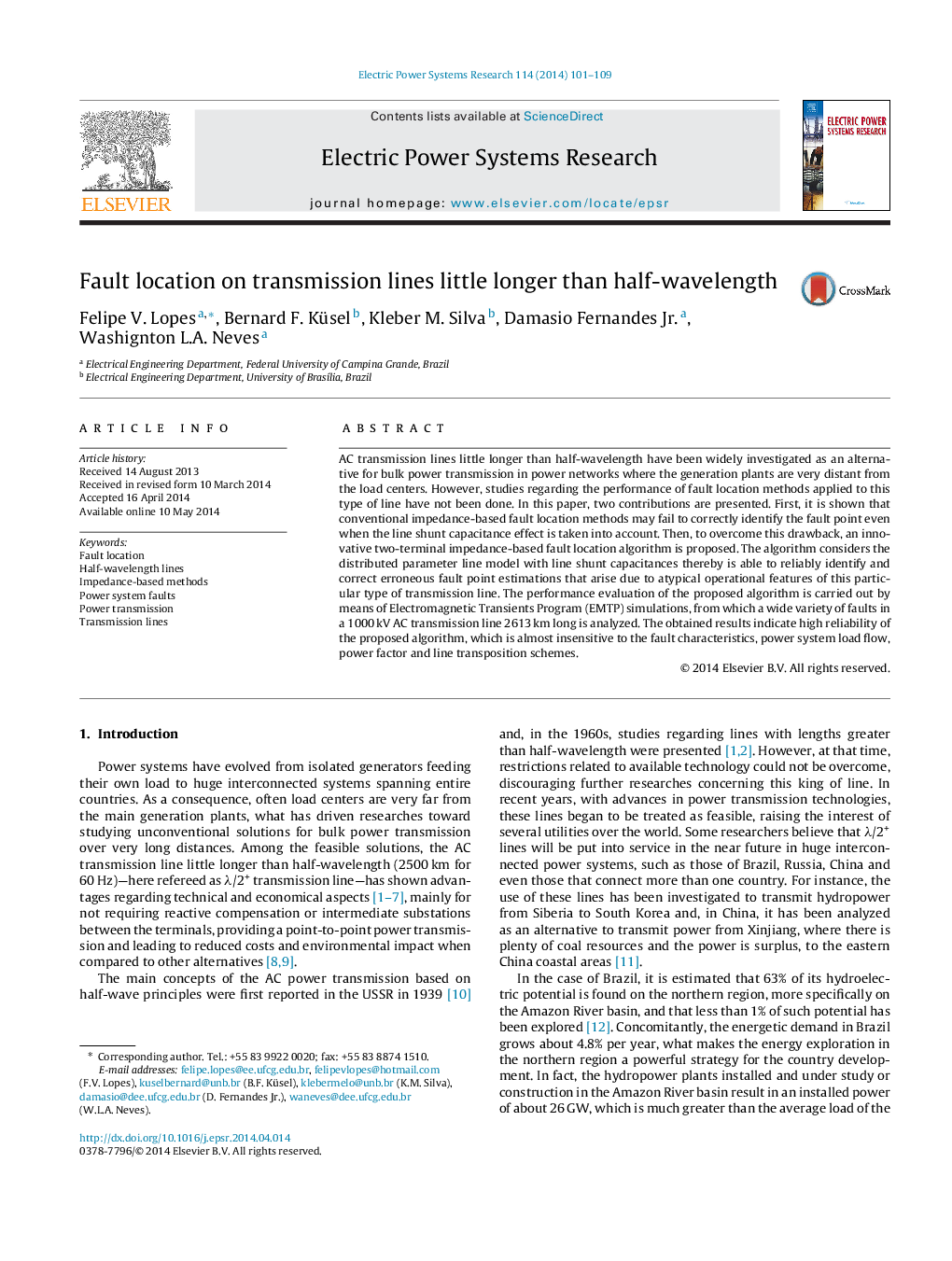| Article ID | Journal | Published Year | Pages | File Type |
|---|---|---|---|---|
| 703432 | Electric Power Systems Research | 2014 | 9 Pages |
•Studies have shown that lines little longer than half-wavelength are advantageous for bulk power transmission over very long distances.•We show that conventional fault location methods are not suitable for lines little longer than half-wavelength.•An innovative and non-iterative two terminal algorithm is proposed.•Extensive EMTP simulations attest the reliability of the algorithm for fault location on lines little longer than half-wavelength.
AC transmission lines little longer than half-wavelength have been widely investigated as an alternative for bulk power transmission in power networks where the generation plants are very distant from the load centers. However, studies regarding the performance of fault location methods applied to this type of line have not been done. In this paper, two contributions are presented. First, it is shown that conventional impedance-based fault location methods may fail to correctly identify the fault point even when the line shunt capacitance effect is taken into account. Then, to overcome this drawback, an innovative two-terminal impedance-based fault location algorithm is proposed. The algorithm considers the distributed parameter line model with line shunt capacitances thereby is able to reliably identify and correct erroneous fault point estimations that arise due to atypical operational features of this particular type of transmission line. The performance evaluation of the proposed algorithm is carried out by means of Electromagnetic Transients Program (EMTP) simulations, from which a wide variety of faults in a 1000 kV AC transmission line 2613 km long is analyzed. The obtained results indicate high reliability of the proposed algorithm, which is almost insensitive to the fault characteristics, power system load flow, power factor and line transposition schemes.
